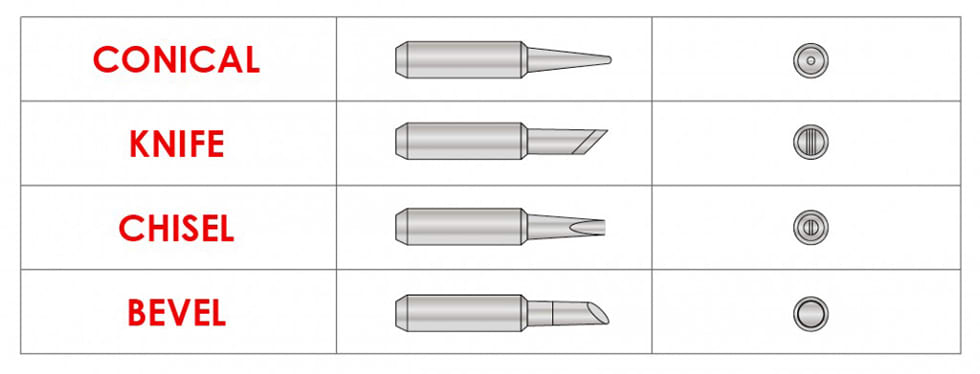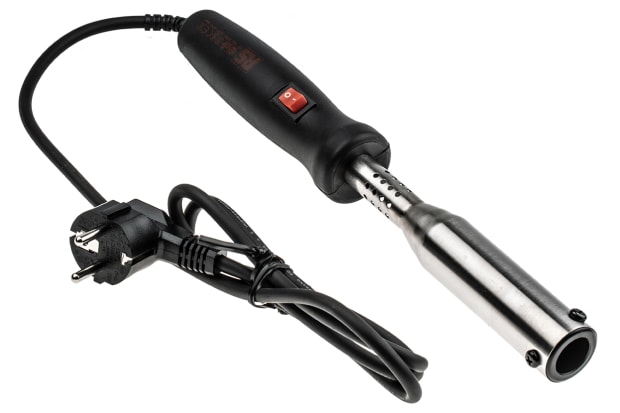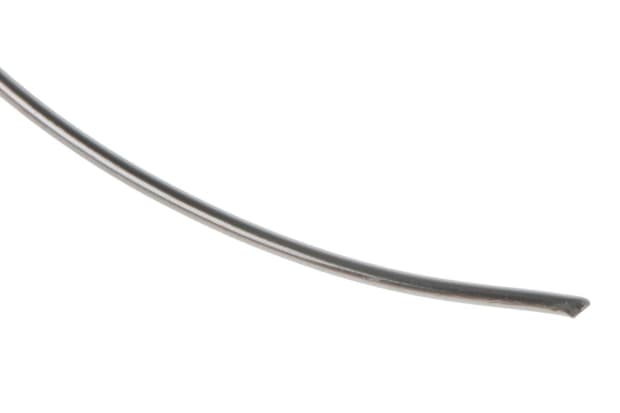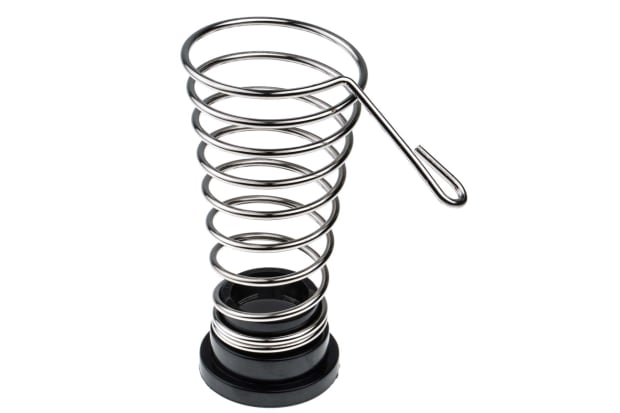- Published 17 Feb 2023
- Last Modified 23 Apr 2024
- 11 min
How to Solder - A Beginners' Guide to Soldering
Learn how to solder safely with our guide, sharing tips on soldering techniques for a variety of scenarios.

What is Soldering?
From electrical engineering professionals to hobbyist do-it-yourself(DIY) fixers, lots of people regularly use a technique known as soldering to perform routine assembly, maintenance and troubleshooting tasks on all manner of workplace or domestic items and equipment.
Soldering is an especially common requirement for jobs involving circuit building, printed circuit board (PCB) assembly and electronic prototyping. However, it can also prove to be an extremely useful and effective technique for joining two or more surfaces together in a wide range of other, more general applications.
What Does Soldering Mean?
In short, soldering is a common and fairly straightforward method for affixing or bonding various types of materials and components to one another. The process is carried out using a small amount of metal alloy, known as solder, and a heated handheld tool called a solderingiron. When you solder items together, you’ll typically be using the hot metal tip of the iron to melt a small amount of solder alloy around and between the components or surfaces being joined.
Once cooled and hardened, the resulting soldered bond or joint is considered to be permanent. It will provide a secure, electrically conductive (for circuitry) and watertight (for plumbing applications) connection between discrete parts. However, it’s worth noting that hardened solders can usually be remelted and removed fairly easily through reapplication of sufficient heat. This often allows for parts that have previously been soldered together to be separated or reworked as necessary. This process is known as desoldering, which we’ll come back to later.
In this beginners’ guide, we’ll offer a quick overview of proper soldering techniques for a few different scenarios and component types while providing handy tips on how to use soldering irons and other key tools safely and accurately. We’ll also discuss which types of products, kits and solderingiron accessories might be best suited to various jobs, answering some basic FAQs about general equipment use and maintenance.
Soldering Safety Precautions: How to Solder Safely
As with all DIY activities involving potentially hazardous tools or conditions, safety awareness should always be a top priority in preparing for soldering work. This includes making sure that you’ve got the right personal protective equipment (PPE) in place prior to starting the job. It also means ensuring that the surrounding area is well-prepared and as free from unnecessary hazards as practically possible.
In addition, it’s important to know the key basics about how to solder safely before you carry out any work. For beginners, there are various aspects to safe soldering that you need to be aware of in order to solder correctly while presenting a minimum risk to yourself, your tools, and your environment.
The most obvious hazard is the soldering iron tip, which needs to get extremely hot in order to perform its primary function. Even basic models that plug directly into a wall socket and offer no manual temperature control (typically a feature of solderingstations, allowing for fine-tuning of iron performance) will usually heat up to around 400°C very quickly. This is easily hot enough to cause severe burns if handled incorrectly. Therefore, you do have to be careful about how hot your soldering irons get and avoid touching them with your bare skin or any other objects that can burn or melt.
More advanced models and various add-on accessories may provide a number of reassuring built-in safety features. However, even versions bought as part of a comprehensive solderingiron kit can carry plenty of potential to cause serious and lasting injury if used carelessly.
In addition to the extreme heat involved, there are several other potential dangers to look out for when soldering. In particular, it’s important to be aware that solder material itself can occasionally ‘spit’ when superheated due to air pockets or impurities. This means that protective eyewear is a must, especially for beginners.
Furthermore, the majority of solder pastes and compounds contain toxic elements such as lead and rosin - it’s always sensible to wear gloves when handling soldering tools and materials and to ensure proper ventilation of your workspace is available before starting a job. You should also use a solder mask or a similar material to cover the parts of your circuit board that you do not want to solder, as this will prevent accidental damage or short circuits.
Soldering Safety Checklist
Before Soldering:
Read all product instructions and safety guidelines thoroughly, and make sure you’re aware of the common risks.
- Read solder ingredient lists and documentation carefully. Check directly with suppliers or manufacturers if not enough information about potential toxicity is provided on the label.
- Make sure that your work area is clean, tidy, stable, and free from sources of ignition.
- Check that you’re working in a well-ventilated area with suitable fume extraction available.
- Always wear safety glasses and use heat proof gloves for handling materials.
- Check that you’re using the right type of product for the task at hand - soldering irons come in different sizes and wattages, often intended for specific sorts of applications.
- Do not use any soldering iron or other item of electrical equipment that shows visible damage to the tool body, cabling or plug.Always know where your nearest fire extinguisher and fire exit routes are.
During Soldering:
- Never attempt to solder live/powered circuits, terminals, connections or components.
- Keep soldering iron cleaning accessories such as wire pads and damp solder sponges close at hand, ensuring that the iron’s tip is kept as free from material build-up as possible during use.
- Never touch the soldering iron anywhere except the insulated handle (sometimes referred to as the ‘wand’).
- Always use tweezers and/or gloves to hold surfaces and components that are being (or have recently been!) soldered.
- Be wary of potential spitting from molten alloys, and keep safety glasses on at all times while melting solder.
- Always return the iron to its cradle or stand when not in use - never lay it directly on a work surface, table or bench.
- Check that the stand is sufficiently weighted or stable enough not to easily topple if you should accidentally snag a cable - if this does happen, do not attempt to catch the iron mid-fall.
- If you do suffer a burn, immediately hold it under cold running water for a minimum of 10-15 minutes before following any necessary first-aid procedures.
- Always switch the soldering iron or station off at the plug socket if you need to leave it unattended at any point.
After Soldering:
- Wipe your soldering iron with a damp sponge or cloth and coat the tip with fresh solder to protect it from oxidation and corrosion.
- Look for any damage or wear on your soldering iron, such as cracks, chips, or frayed cords. Get it fixed or replaced if you find any issues.
- Put your soldering iron and other equipment in a dry, well-ventilated place, away from fire hazards and heat sources. Switch it off and place it in its stand or cradle before storing it.
- Get rid of any leftover solder or waste materials in a green way. Follow the local rules for soldering waste disposal, and ask your local waste management agency for the best disposal methods.
- Remove any flux residue, solder splashes, or other dirt from your PCB after soldering. Use a flux remover, isopropyl alcohol, or distilled water to clean it. Avoid using water or solvents on the motherboard or other delicate components.
- Examine your solder joints for any flaws, including cold joints, bridges, or cracks. Use a magnifying glass, a multimeter, or a continuity tester to check your solder joints and make sure they’re strong and stable.

Soldering Techniques for Different Tasks
While there are numerous tips, techniques and rules of thumb for general soldering work that apply more or less universally regardless of the type of job you’re doing, some specific fixes demand a more bespoke approach. You can also buy a wide range of solderingiron adapters and add-ons for making particular sorts of work far easier and more efficient.
In the sections below, we’ve listed a few different areas, types and techniques in soldering that are useful to get acquainted with if you want to be able to turn your hand to a wider range of soldering tasks.
How to Solder a Wire
For most people, an ‘everyday’ soldering task might involve fixing or improving an existing electrical connection. Very often, that can require knowing how to solder a wire - or, more specifically, how to solder two wires together. This would broadly be considered a fairly standard, common example of a soldering job and is generally very achievable using a basic set of common tools and materials.
How to Solder a Circuit Board and PCB
When it comes to knowing how to solder circuit boards, it’s worth noting that there are a couple of different techniques used specifically for electronic soldering - and particularly for adding components to a PCB. Most PCB components are designed to be mounted in one of two ways - using either a through-hole method or a surface mount method. The correct approach in any given scenario will be dictated by the type of board and component that you are working with.
How to Solder a Copper Pipe
An alternative job involves knowing how to solder copper pipe correctly. Unlike most other types of joint soldering (particularly electrical/PCB work), the aim when soldering copper pipe is often to achieve a leak-free joint. The goal is to end up with reliable and consistent water flow through two or more lengths of tubing.This requires a rather different set of tools and techniques than standard benchtop soldering work. Most notably, you’re likely to want either a gas blow torch or a purpose-designed plumbing soldering iron for applications involving ducting and pipework. As a result, the physical process of actually heating and sealing the joint with solder is also different.
How to Solder LEDs and Resistors
Soldering LEDs (light emitting diodes) and resistors are essential in electronics assembly, particularly in hobbyist projects and circuit prototyping. Proper soldering ensures reliable electrical connections and functionality. Pay attention to polarity when soldering LEDs, noting the anode and cathode for correct illumination. Securely solder resistors onto the circuit board, considering their resistance value and tolerance. Apply the right amount of heat and solder to achieve reliable connections without damaging the components.
How to Solder a Micro USB Connector
Soldering a micro USB connector is essential for electronics like smartphones and tablets. You need to attach it carefully to the circuit board and avoid overheating that can damage internal parts. Strong solder joints are necessary to handle frequent cable use. Good soldering skills and tools like a fine-tipped iron and flux are crucial for a solid connection.
Soldering Iron Tips and Components
Good quality interchangeable soldering iron tips are among the most important parts of a soldering iron setup and a staple of any well-stocked kit. They do the brunt of the work during soldering, transferring heat from the iron into the alloy in order to melt it and allow it to flow into joints between two components or workpieces.
These tips are available in numerous different sizes and shapes for specific tasks and are also sometimes referred to as ‘bits’. Some of the most popular varieties of soldering iron tips can be found below.

Soldering Iron Tips
Conical Soldering Iron Tips
The conical soldering iron tip is a standard-shaped bit for general applications. It is also handy for achieving precision in delicate electronics.
Chisel Soldering Iron Tips
Another common tip type, chisel bits, are often used for soldering wires. The broad, flat end helps to deliver heat and solder more evenly.
Bevel Soldering Iron Tips
Also known as a hoof tip, the bevel soldering iron bit is angled to offer greater surface area. This tip is ideal for drag-soldering and jobs requiring larger quantities of alloy.
Knife Soldering Iron Tips
Also known as a blade soldering iron tip, the knife bit features a flattened tip with a fine edge. This option is useful for accessing tight gaps and for desoldering and material removal.
FAQs
Key Soldering Equipment
Soldering Irons
Browse our extensive range of soldering irons from leading brands, including Weller, Ersa, Antex Electronics, and RS Pro.
Solders
View the solders available in our range and discover the most suitable product to meet your requirements.
Solder Accessories
From soldering tools to soldering iron stands and much more, explore our full range of soldering iron accessories.
Solder Mask
Protect your workpiece and ensure clean solder joints with a solder mask. Browse our selection of solder mask products for precise application.
PPE
Prioritise safety during soldering tasks with our range of PPE. Explore options such as safety glasses, heat-resistant gloves, and more.
Soldering Stations
Browse our full collection of soldering stations and shop online today.





